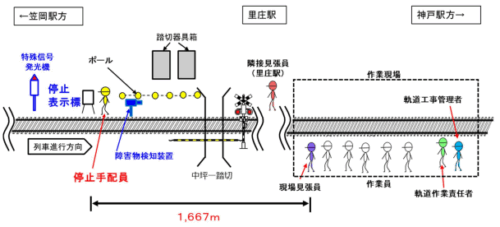2025-05-16 清華大学

Figure 1. The HSR platform under measurement
The study proposed average power spectral density (A-PSD) of train-induced vibration as an indicator for HSR health monitoring (Fig. 2). A-PSD error margins were established for each railway section and validated through over 14 months of continuous monitoring. During that time, there were earthquakes, rainstorms, and seasonal changes. However, the A-PSD of railway sections remained stable within the error margins (Fig. 2c–f), consistent with the healthy railway condition.
<関連情報>
- https://www.tsinghua.edu.cn/en/info/1245/14249.htm
- https://www.nature.com/articles/s41467-025-59507-6
高速鉄道の健全性検査のための沿線テレコムファイバーを用いたレーザー干渉計 Laser interferometry for high-speed railway health inspection using telecom fiber along the line
Guan Wang,Dongqi Song,Zhongwang Pang,Fangmin Wang,Hongfei Dai,Wenlin Li & Bo Wang
Nature Communications Published:03 May 2025
DOI:https://doi.org/10.1038/s41467-025-59507-6
Abstract
The health inspection of widespread high-speed railway network is crucial to maintain the regular transportation, particularly as the velocity of high-speed trains continues to escalate. To narrow the long inspection period of current track recording vehicle method, we have implemented a laser interferometer sensing system to turn those existing fiber cables within high-speed railway cable ducts into effective sensing elements. Based on the distributed vibration sensing of daily passing trains, an average power spectrum density indicator is used to assess the health of high-speed railway infrastructures. During the observation over one year, average power spectrum densities of 4 typical infrastructures remain stable, indicating their robust health despite challenging environmental conditions. To demonstrate the sensitivity of average power spectrum density indicator on railway faults, we analyze the sensing results of a rail section before and after track maintenance, which shows distinctive average power spectrum density features corresponding to different levels of creep deformation. Additionally, the sensing system can also report other ambient vibrations, such as seismic waves after propagation of over 300 km. It demonstrates the fiber sensing system not only has the ability to act as a real-time supplementary tool for high-speed railway health inspection, but also has potential to establish a large sensing network.



